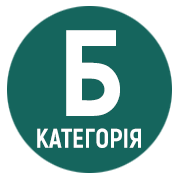MUSEUMIFICATION OF ANCIENT CULTURAL HERITAGE IN THE RENAISSANCE
Abstract
The article analyzes the main specific positive and negative features of the museumization of antiquity in the Renaissance. The purpose of this article is to summarize the main aspects of the Renaissance museumization of antiquity as the first attempt at institutional work on the collection, storage and restoration of cultural heritage. Most scholars agree that the birth of museology as a science is associated with those ancient collections that began to appear in abundance in Europe during the Renaissance. It is determined that antiquity was the aesthetic ideal that the representatives of the Renaissance humanism followed, or at least sought to imitate. The remains of ancient buildings were not only studied by humanists, but also preserved by them, although at the same time, amazingly barbaric destruction of ancient monuments often took place. In the Renaissance, connoisseurs of art appear in multitudes. The obligatory principle of architectural restoration during this period was the addition to the monument of elements that had never been on it, but which, according to humanist sculptors, “decorated” the monument. The aesthetics of that time focused not on the authenticity of the masterpiece, but on its artistic and technical characteristics, which contributed to the emergence and increase in the number of fakes. The study concluded that the Renaissance can be considered only as an era of accumulation of museum material – the initial construction of museum socio-cultural institutes. However, the time had to come when quantity had to turn into quality. The material accumulated over the centuries required scientific processing. Renaissance cultural community, in attempts and bold creative improvisations, created shaky, mobile, unfinished versions of museum structures. New methods of identifying, distributing, storing works of ancient art were used, but they were not scientifically implemented and institutionalized. The practical significance of the article is the correction of the existing methods of museum scientific attribution of the material cultural heritage of antiquity.
References
2. Стратерн П. Медичи. Крестные отцы Ренессанса. / Перевод с английского Н.А. Анастасьева. Москва : АСТ; Астрель, 2010. 509 с.
3. Чемберлин Э. Эпоха Возрождения. Быт, религия, культура. / Перевод с английского Е.Ф. Левиной. Москва : ЗАО Центрполиграф, 2006. 239 с.
4. Яхонт О.В. Проблемы консервации, реставрации и атрибуции произведений искусства : избранные статьи / Научный редактор Г.И. Вздорнов. Москва : Сканрус, 2010. 465 с.
5. Burckhardt J.C. Die Cultur der Renaissance in Italien: Ein Versuch. Basel : Schweighauser, 1860. 576 p.
6. Delumeau J. Civilisation de la Renaissance. Paris : Arthaud, 1967. 718 р.
7. Gregorovius F. History of the city of Rome in the Middle Ages. München : C.H. Beck, 1980. Vol. II. 739 p.
8. Ledos E.G., Argenville A.J. Dezallier d’. Dictionnaire de biographie française. Paris, 1939. T. 3. Cln. 581–583.
9. Pick B. Das Gothaer Münzkabinett, 1712–1912. Coburg-Gothaischen Landen Heimblätter. 1912. Bd. 8. S. 1–13.
10. Reeve J. Grand-Tour The dictionary of art. New York, 1996. V. 13. P. 296–306.
11. Reidmeister L. Die Porzellankabinette der brandenburgisch-preussischen Schlösser. Jahrbuch der preussischen Kunstsammlungen. 1933. Bd. I. S. 262–272.
12. Schnapp A. The Discovery of the Past: The Origins of Archaeology. British Museum Press, 1996. 384 p.



